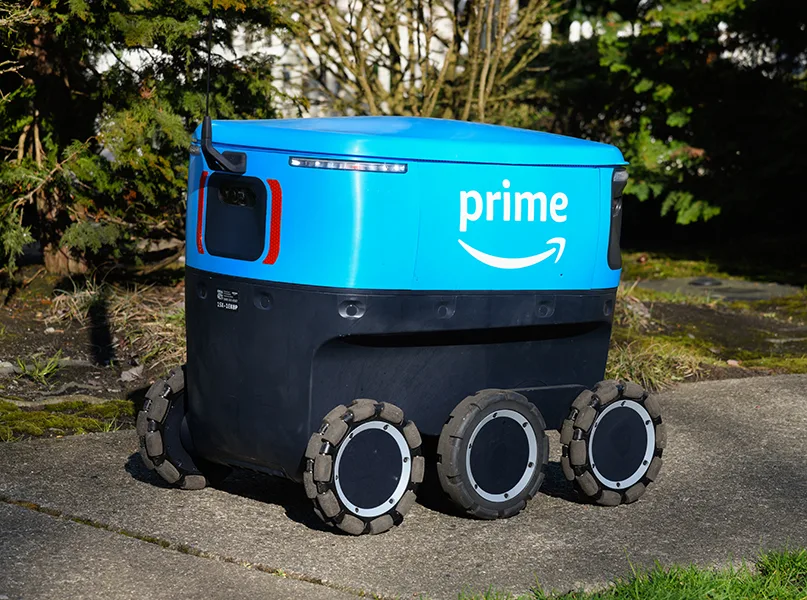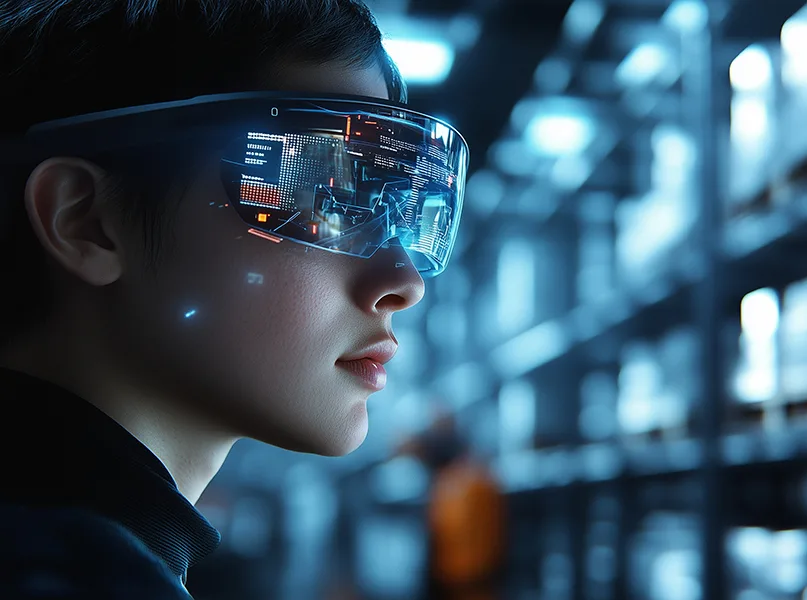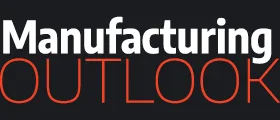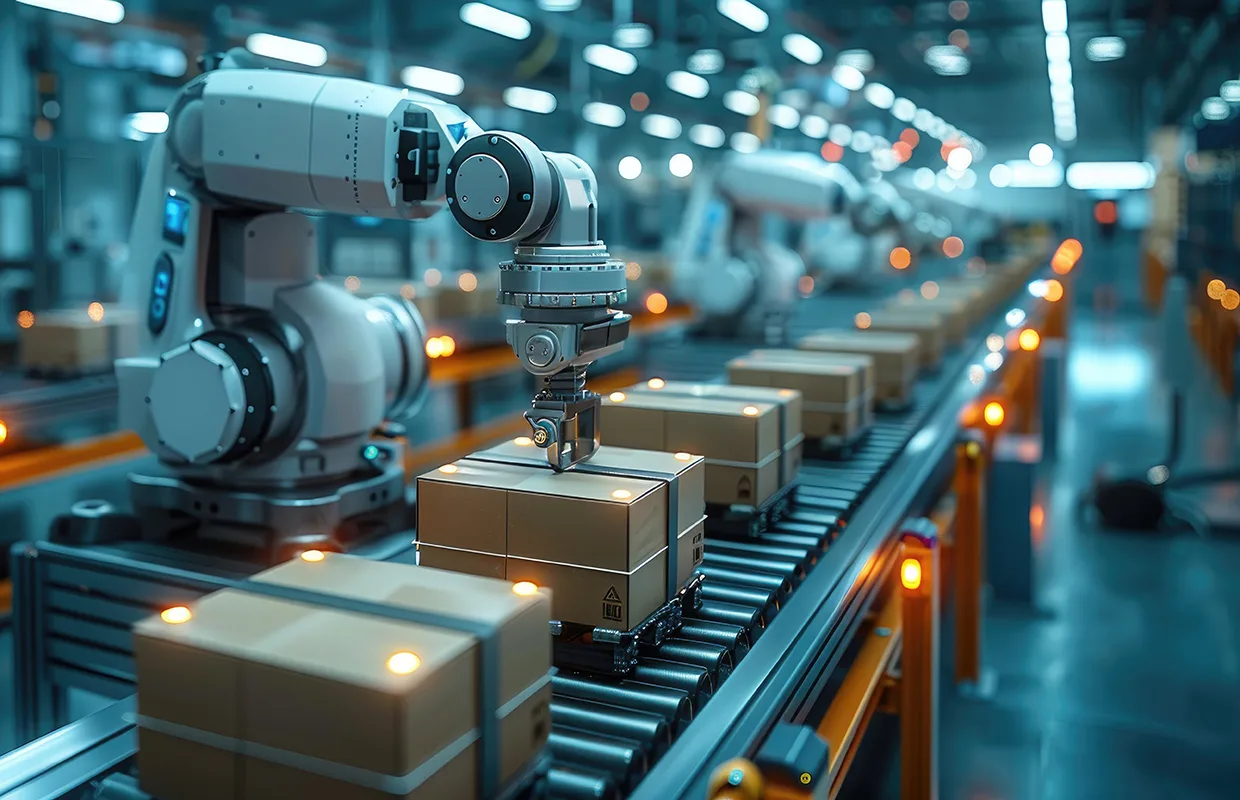Amazon recently unveiled plans for its next-generation warehouses, which are set to revolutionise the e-commerce and logistics industry. Dijam Panigrahi, co-Founder and COO of GridRaster Inc., explores the broader implications of automation on the workforce, economy, and society at large.
A REVOLUTION DRIVEN BY ROBOTICS, AUTOMATION, AND AI
In recent years, the manufacturing, warehousing, and logistics industries have undergone a significant modernisation movement, driven by the rapid advancement of robotics, automation, and artificial intelligence (AI).
Amazon’s recent announcement of its first next-generation fulfilment centre in Shreveport, Louisiana, serves as a prime example of this revolution in action.
This state-of-the-art facility, spanning an impressive three million square feet (sqft) across five floors, represents a significant leap forward in the integration of robotics and AI into warehouse operations.
It is also set to employ 10 times as many robots as a standard fulfilment centre, showcasing the company’s commitment to leveraging technology to enhance efficiency and productivity.
This move is not just about replacing human workers with machines; rather, it’s about creating a symbiotic relationship between humans and robots, where each complements the other’s strengths.
The facility will still employ 2,500 people, highlighting the continued importance of human expertise and oversight in these advanced systems.

AMPLIFYING THE USE OF DIGITAL TWINS
One of the key technologies driving this movement is the use of digital twins – virtual replicas of physical systems, products, or processes that can be used for design, production, and training purposes.
In the context of manufacturing and warehousing, digital twins allow companies to simulate and optimise their operations in a virtual environment before implementing changes in the real world.
This approach significantly reduces the risk of costly errors and allows for continuous improvement of processes.
For instance, companies can use digital twins to design and test new warehouse layouts, optimising the flow of goods and the placement of robotic systems.
They can also simulate various scenarios, such as sudden spikes in demand or supply chain disruptions, to develop robust contingency plans.
In terms of training, digital twins provide a safe and cost-effective way to familiarise workers with new robotic systems and processes without disrupting actual operations.
Augmented reality (AR) and virtual reality (VR) technologies are also playing an increasingly important role in this new paradigm.
AR can be used to provide real-time information to warehouse workers, helping them locate items more quickly and efficiently.
VR, on the other hand, can be used for immersive training experiences, allowing workers to practice complex tasks in a safe, virtual environment before performing them in the real world.
EMBRACING 3D-AI SOLUTIONS
The concept of 3D-AI is emerging as a crucial element in tying all these technologies together.
3D-AI refers to the use of AI algorithms to process and analyse three-dimensional data, such as that generated by digital twins and AR/VR systems.
This technology enables more sophisticated decision-making and predictive capabilities, further enhancing the efficiency and responsiveness of manufacturing and logistics operations.
For example, 3D-AI can be used to optimise the movement of autonomous mobile robots (AMRs) within a warehouse, ensuring they take the most efficient routes and avoid collisions.
It can also be employed to analyse the 3D structure of products and packaging, automating the process of determining the best way to stack and transport items.
Furthermore, 3D-AI can be used to analyse data from multiple warehouses and distribution centres, optimising the entire supply chain network in real time.
Amazon’s use of the Sequoia system in its new fulfilment centre is a prime example of how these technologies are being implemented today.
Sequoia is a multi-level containerised inventory system that can hold over 30 million items, making it faster and safer for employees to store and pick goods. This system demonstrates the rapid pace of innovation in this field.
Another leading manufacturer embracing these technologies is Siemens. The company has developed a comprehensive digital twin platform that covers the entire product lifecycle, from design and production to maintenance and optimisation.
Siemens uses this technology not only in its own manufacturing processes but also offers it as a solution to other companies looking to digitise their operations.

OVERCOMING WORKFORCE DEVELOPMENT CHALLENGES
Whilst these technological advancements are crucial for the future of manufacturing and logistics, it’s important to recognise that they also present challenges, particularly in terms of workforce development.
As the demand for skilled workers who can operate and maintain these advanced systems grows, companies are facing a significant skills gap.
To address this challenge, US-based companies should consider partnering with friendly nations like India for workforce development opportunities.
India, with its large pool of skilled IT professionals and engineers, can provide valuable resources to help bridge this gap. By leveraging India’s technological expertise and workforce, US companies can continue to expand their operations despite current labour challenges.
For instance, companies could establish training centres in India to develop a workforce skilled in operating and maintaining advanced robotic systems and AI algorithms. These workers could then be deployed globally or work remotely to support operations in the US and other countries.
Additionally, Indian tech companies could be engaged to develop software and AI solutions for manufacturing and logistics applications, fostering a mutually beneficial partnership.
However, it’s important to strike a balance between leveraging global talent and developing domestic capabilities. Companies should also invest in STEM education and vocational training programmes within the US to ensure a sustainable pipeline of skilled workers for the long term.

MOVING AHEAD INTO THE FUTURE OF MANUFACTURING
As we move into the future, the integration of robotics, automation, and AI into manufacturing, warehousing, and logistics will become increasingly sophisticated.
We can expect to see more facilities like Amazon’s Shreveport fulfilment centre, where robots and humans work seamlessly together, guided by advanced AI systems and digital twins.
The use of AR and VR for training and operations will become commonplace, enhancing worker productivity and safety.
Moreover, the concept of “lights-out” manufacturing, where entire production lines operate without human intervention, may become a reality for certain industries.
However, human expertise will remain critical for oversight, maintenance, and handling complex or unique situations that AI and robots may struggle with. New research from Interact Analysis shows that the global warehouse automation market will grow from USD$29.6 billion in 2020 to USD$69 billion in 2025.
The supply chain of the future will be more responsive and resilient thanks to the predictive capabilities of AI and the flexibility offered by advanced robotics.
Real-time data analysis will allow companies to anticipate and respond to changes in demand or disruptions in the supply chain almost instantaneously. This increased agility will be critical in an increasingly volatile global market.
As we move forward, the companies that can effectively integrate these elements will be the ones that lead the way in shaping the future of industry.





























